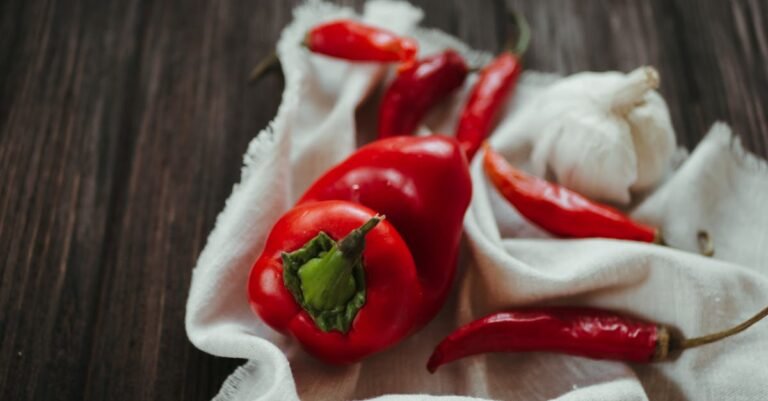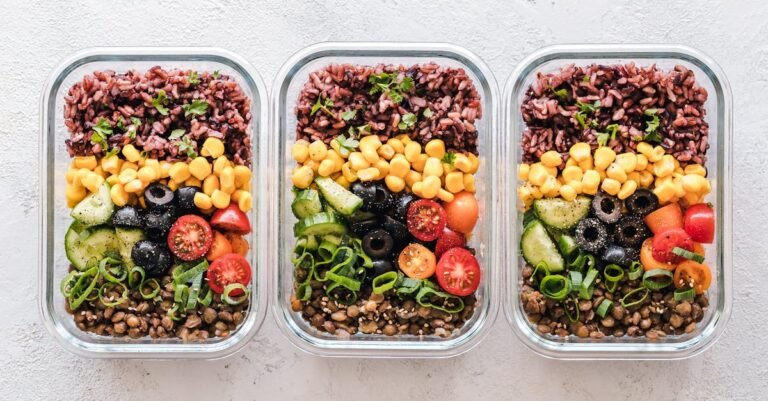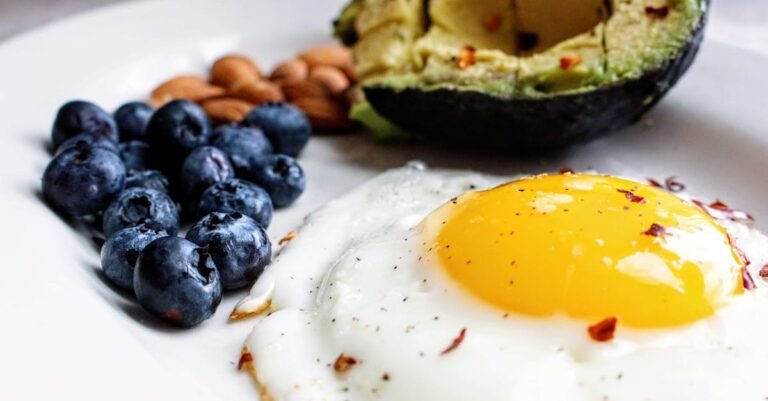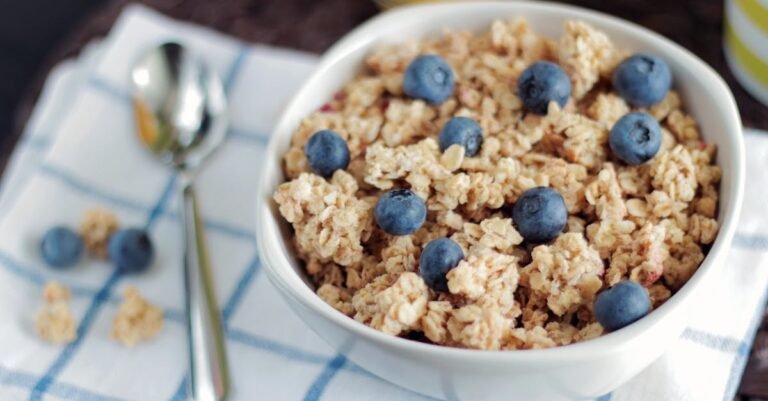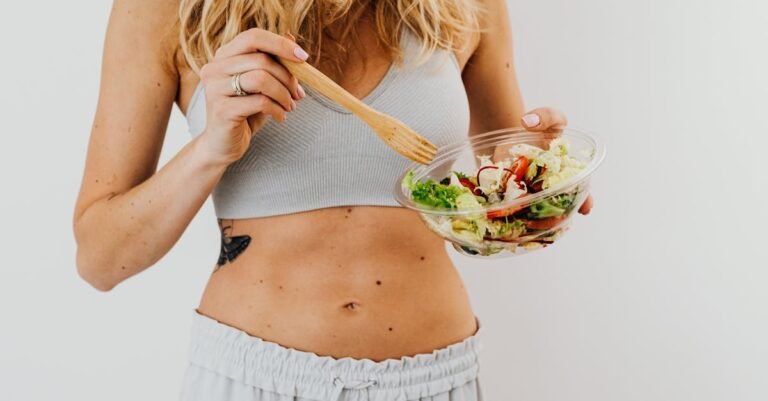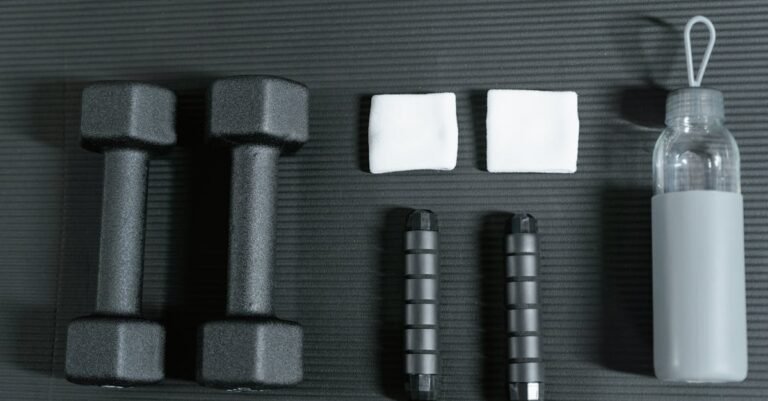- Healthy Lunch Ideas For Active People
- Why Your Midday Meal Matters (A Lot!) for Active Lifestyles
- The Anatomy of a Power Lunch: What You Need
- Quick, Easy, and Delicious Healthy Lunch Ideas
- Meal Prep Strategies for the Time Crunched Athlete
- Hydration Station: Don’t Forget to Drink Up!
- Timing Your Lunch: Fueling for Performance and Recovery
- Conclusion: Fueling Your Active Life, One Lunch at a Time
- Frequently Asked Questions (FAQs)
Healthy Lunch Ideas For Active People
Okay, let’s talk lunch. If you’re someone who likes to move – whether you’re hitting the gym, pounding the pavement, cycling miles, or just generally living an active life – your midday meal isn’t just a pit stop. It’s crucial. It’s the fuel that powers your afternoon, aids your recovery, and keeps you feeling strong and energized. But let’s be real, figuring out healthy, satisfying, and quick lunches can feel like another workout in itself, right? You’re busy, maybe a little tired from that morning session, and the temptation to grab something fast (and maybe not so nutritious) is strong. I get it! That’s why we’re diving deep into healthy lunch ideas specifically designed for active people like you. Forget sad desk salads or boring sandwiches; we’re talking about delicious, power packed meals that will support your goals and taste amazing.
Why Your Midday Meal Matters (A Lot!) for Active Lifestyles
Think of your body like a high performance car. You wouldn’t fill a sports car with low grade fuel and expect it to win a race, would you? The same goes for your body. After a morning of activity, or in preparation for an afternoon workout, your body is crying out for quality nutrients. Lunch is your prime opportunity to refuel and replenish.
Skipping lunch or opting for sugary, processed options can lead to that dreaded afternoon slump, hinder muscle repair, and even sabotage your fitness progress. A well balanced lunch, on the other hand, does wonders. It helps to:
- Restore Glycogen Stores: Intense activity uses up the stored carbohydrates (glycogen) in your muscles. Lunch helps top these stores back up, providing energy for later.
- Promote Muscle Repair and Growth: Exercise creates tiny tears in your muscle fibers. Protein consumed at lunch provides the building blocks (amino acids) needed to repair this damage and build stronger muscles.
- Maintain Stable Blood Sugar Levels: A balanced meal prevents the sharp spikes and crashes in blood sugar that can leave you feeling foggy and fatigued. This means sustained energy throughout the afternoon.
- Boost Concentration and Focus: Your brain needs fuel too! A nutritious lunch helps you stay sharp and productive, whether you’re back at your desk or heading out for another activity.
- Support Overall Health: Consistent healthy eating contributes to better immune function, weight management, and long term wellbeing. Lunch is a significant part of that equation.
So, viewing lunch as a non negotiable part of your active routine is the first step towards unlocking better performance and recovery.
The Anatomy of a Power Lunch: What You Need
What exactly makes a lunch “healthy” and “power packed” for an active person? It’s all about balance and including key macronutrients and micronutrients. Think of it as building your perfect fuel blend. You need the right mix of protein, carbohydrates, healthy fats, and essential vitamins and minerals.
Lean Protein Powerhouses: Building Blocks for Success
Protein is the superstar when it comes to muscle repair and growth. It also helps keep you feeling full and satisfied, preventing those post lunch cravings. Aim for lean sources to keep saturated fat in check.
Why it’s crucial: After exercise, your muscles are primed to absorb amino acids for repair. Consuming protein at lunch kick starts this process, reducing muscle soreness and promoting faster recovery. It’s like sending in the construction crew right when they’re needed most.
Great options include:
- Grilled or baked chicken or turkey breast
- Fish like salmon, tuna (canned or fresh), or cod
- Lean beef or pork
- Eggs (hard boiled are super convenient!)
- Legumes like lentils, chickpeas, black beans
- Tofu or tempeh
- Greek yogurt (plain, unsweetened)
- Cottage cheese
Try incorporating a good portion of one of these into every lunch.
Complex Carbohydrates: Your Sustainable Energy Source
Carbohydrates often get a bad rap, but for active individuals, they are essential. They are your body’s preferred source of energy. The key is choosing complex carbohydrates over simple, refined ones. Complex carbs break down more slowly, providing a steady release of energy rather than a quick spike followed by a crash.
Why it’s crucial: Remember those glycogen stores we talked about? Complex carbs are the best way to replenish them. This sustained energy release keeps you going strong through the afternoon, whether you’re working, training, or just living life.
Great options include:
- Quinoa
- Brown rice or wild rice
- Whole wheat bread, pasta, or crackers
- Oats (yes, even for lunch sometimes!)
- Sweet potatoes or regular potatoes (with skin)
- Barley
- Farro
- Whole corn
- Legumes (they double dip as protein and carbs!)
Think whole, unprocessed sources for the biggest benefit.
Healthy Fats: More Than Just Flavor
Fat is not the enemy! Healthy fats, particularly unsaturated fats, play vital roles in hormone production, nutrient absorption (especially fat soluble vitamins like A, D, E, and K), and providing long lasting energy. They also add flavor and help you feel satiated.
Why it’s crucial: Fats provide a dense source of energy, important for endurance activities. They also help reduce inflammation, which can be beneficial after strenuous exercise. Including healthy fats ensures you’re absorbing all the goodness from the other components of your meal.
Great options include:
- Avocado
- Nuts (almonds, walnuts, cashews)
- Seeds (chia seeds, flaxseeds, pumpkin seeds, sunflower seeds)
- Olive oil (especially extra virgin)
- Fatty fish (like salmon, mackerel)
- Olives
A little goes a long way, so focus on incorporating moderate amounts.
Vitamins and Minerals: The Unsung Support Crew
While protein, carbs, and fats provide the energy, vitamins and minerals are the facilitators. They’re involved in thousands of bodily processes, including energy metabolism, muscle contraction, oxygen transport, and immune function. Active people often have slightly higher needs for certain micronutrients due to increased metabolic demands and nutrient losses through sweat.
Why it’s crucial: Think of them as the spark plugs and lubricants in your body’s engine. Without them, energy production falters, recovery slows, and you’re more susceptible to illness or injury. Deficiencies in minerals like iron, calcium, and magnesium, or vitamins like B vitamins and Vitamin D, can significantly impact performance.
Great options include:
- Load up on colorful vegetables: Leafy greens (spinach, kale), broccoli, bell peppers, carrots, tomatoes. Aim for a variety of colors to get a wide range of nutrients.
- Include fruits: Berries, citrus fruits, apples, bananas. Fruits provide vitamins, minerals, and antioxidants.
- Whole grains, nuts, seeds, and legumes also contribute significantly to your micronutrient intake.
Eating a varied diet rich in whole foods is the best way to cover your bases.
Quick, Easy, and Delicious Healthy Lunch Ideas
Knowing the components is one thing, putting them together into a tasty, convenient lunch is another. Here are some practical ideas that tick all the boxes and can be adapted based on your preferences and what you have on hand.
The Mighty Grain Bowl: Customizable Fuel
Grain bowls are perhaps the ultimate customizable healthy lunch. They’re easy to assemble, endlessly versatile, and perfect for using up leftovers or prepped ingredients.
Building Your Perfect Bowl
Follow this simple formula:
- Base: Start with a serving of your favorite complex carbohydrate. Think cooked quinoa, brown rice, farro, or even roasted sweet potato cubes.
- Protein: Add a generous portion of lean protein. Grilled chicken strips, canned tuna or salmon, hard boiled eggs, chickpeas, black beans, baked tofu, or lentils work beautifully.
- Veggies (Load ‘Em Up!): This is where you add color, crunch, and tons of vitamins. Include both raw and cooked veggies. Think chopped spinach or kale, shredded carrots, sliced cucumbers, cherry tomatoes, roasted broccoli or cauliflower, bell peppers, corn, peas. Don’t be shy!
- Healthy Fat & Flavor: Add a sprinkle of nuts or seeds (pumpkin seeds, sunflower seeds, slivered almonds), a quarter of an avocado, or a drizzle of healthy dressing. For dressings, try a simple vinaigrette made with olive oil and lemon juice or vinegar, tahini dressing, or even just a squeeze of lime and a dash of hot sauce.
Example: Quinoa base + grilled chicken + roasted broccoli + cherry tomatoes + spinach + avocado slices + lemon tahini dressing.
Power Packed Salads: Think Beyond the Rabbit Food
Forget limp lettuce and a few sad cucumber slices. A power salad is a substantial meal that incorporates all the key components we discussed.
Creating Salad Sensations
The key is layering textures and flavors:
- Greens Base: Start with a bed of robust greens like spinach, kale, romaine, or mixed greens.
- Protein Punch: Add your lean protein source – flaked salmon, grilled shrimp, diced turkey, chickpeas, or lentils are great.
- Complex Carb Boost: Toss in some cooked quinoa, barley, roasted sweet potato chunks, or whole wheat croutons (use sparingly or make your own). Even beans or corn add good carbs.
- Veggie Variety: Add plenty of other vegetables for color, crunch, and nutrients – bell peppers, cucumbers, tomatoes, red onion, shredded beets, broccoli florets.
- Healthy Fat & Crunch: Include avocado, nuts (walnuts, pecans), seeds (sunflower, chia), or olives.
- Flavorful Dressing: Opt for vinaigrettes, yogurt based dressings, or tahini dressings over creamy, high calorie options. Make your own to control ingredients!
Example: Mixed greens + canned tuna (drained) + chickpeas + cucumber + bell peppers + olives + feta cheese (adds protein/fat/flavor) + olive oil and red wine vinegar dressing.
Wholesome Wraps & Sandwiches: Smart Choices
Wraps and sandwiches can absolutely be part of a healthy lunch plan, provided you make smart choices.
Wrap It Up the Right Way
- Choose Whole Grains: Opt for 100% whole wheat bread, pitas, or tortillas. Look for options with fiber. Sourdough can also be a good choice for some.
- Lean Protein Filling: Use sliced turkey or chicken breast, roast beef, hummus, canned fish, mashed beans, or eggs.
- Pile on the Veggies: Lettuce, spinach, tomato slices, sprouts, shredded carrots, cucumber, onions – pack them in!
- Healthy Spreads: Use avocado, hummus, or mustard instead of mayonnaise based spreads. A thin layer of pesto can also add great flavor.
- Watch Portion Sizes: Be mindful of the size of your bread or wrap and the amount of filling.
Example: Whole wheat tortilla + hummus + sliced turkey + spinach + shredded carrots + cucumber slices. Roll it up tight!
Leftover Magic: Dinner’s Encore Performance
Never underestimate the power of leftovers! This is often the quickest and easiest lunch solution. When making dinner, intentionally cook extra portions of healthy components like grilled chicken, roasted vegetables, quinoa, or lentil stew.
Why it works: It saves time, reduces food waste, and ensures you have a balanced meal ready to go. Just pack it up the night before, and lunch is sorted. A hearty chili, a stir fry, baked salmon with roasted veggies – these all make fantastic next day lunches.
Meal Prep Strategies for the Time Crunched Athlete
Okay, these ideas sound great, but who has time to cook a gourmet lunch every day? This is where meal prepping comes in. Investing a little time upfront saves you heaps of time (and stress) during the busy week.
The Sunday Prep Power Hour (or Two)
Dedicate an hour or two on the weekend (or whenever works for you) to prepare key components for the week’s lunches:
- Cook a Batch of Grains: Make a big pot of quinoa, brown rice, or farro. Let it cool completely before storing in the fridge.
- Prep Proteins: Grill or bake several chicken breasts, hard boil a dozen eggs, bake some tofu, or cook a batch of lentils.
- Wash and Chop Veggies: Wash lettuce and spinach, chop carrots, cucumbers, bell peppers, roast a tray of broccoli or sweet potatoes. Store them in airtight containers.
- Make Dressings/Sauces: Whip up a batch of your favorite healthy dressing or sauce.
With these components ready, assembling your lunch each day (or packing it the night before) takes mere minutes.
Batch Cooking Basics: Cook Once, Eat Often
This involves making large quantities of specific meals that freeze well or last several days in the fridge. Think soups, stews, chilis, casseroles, or large batches of pasta sauce with lean meat or lentils.
How it helps: You cook once and have multiple lunches (or dinners) ready to go. Portion them out into individual containers for easy grab and go options. This is particularly great for colder months when a warm, hearty lunch is appealing.
Smart Container Solutions: Pack Like a Pro
Having the right containers makes meal prepping and packing lunches much easier.
- Bento Boxes: These containers have multiple compartments, perfect for keeping different food items separate (e.g., keeping salad dressing away from greens until you’re ready to eat).
- Glass Containers: Durable, easy to clean, and great for reheating if needed.
- Mason Jars: Excellent for layered salads (dressing at the bottom, hard veggies, grains, protein, greens on top) to prevent sogginess.
- Leak Proof Containers: Essential for soups, stews, or anything with sauces.
Invest in a good set of containers that suit the types of lunches you plan to make.
Don’t Forget to Drink Up!
While we’re focused on food, hydration is equally critical for active individuals. Dehydration can zap your energy, impair performance, and hinder recovery. Don’t rely solely on the liquids in your food.
Aim to drink water consistently throughout the day, including with your lunch. If you find plain water boring, try infusing it with lemon, cucumber, mint, or berries. Unsweetened herbal tea is another great option. Avoid sugary drinks like soda, sweetened iced teas, and many sports drinks (unless needed for specific, intense endurance activities), as they can lead to energy crashes and add unnecessary calories.
Timing Your Lunch: Fueling for Performance and Recovery
When should you eat lunch relative to your workout? The ideal timing can depend on your schedule and when you exercise.
- If you work out midday: Try to eat your lunch after your workout, ideally within 30 to 60 minutes. This is the prime window for nutrient uptake to kickstart recovery and replenish glycogen stores. If you need something before a midday workout, have a smaller, easily digestible snack containing carbs and a little protein about an hour beforehand (like a banana with a small handful of almonds).
- If you work out in the morning: Lunch serves as a crucial recovery and refueling meal. Aim for a balanced meal rich in protein and complex carbs a few hours after your workout.
- If you work out in the afternoon/evening: Lunch provides the sustained energy you’ll need later. Eat a balanced lunch 2 to 4 hours before your workout. This gives your body time to digest and avoids discomfort during exercise. You might need a small pre workout snack closer to your session if lunch was many hours prior.
Listen to your body! Experiment to see what timing works best for your energy levels and digestion.
Conclusion: Fueling Your Active Life, One Lunch at a Time
Eating a healthy lunch doesn’t have to be complicated or time consuming, even with a busy, active schedule. By focusing on incorporating lean protein, complex carbohydrates, healthy fats, and plenty of vitamins and minerals, you can create satisfying meals that truly fuel your body for performance and recovery. Whether you embrace the versatility of grain bowls, the freshness of power salads, the convenience of wholesome wraps, or the genius of leftovers, the key is planning and preparation. A little bit of meal prep can transform your midday meal from an afterthought into a powerful tool for achieving your fitness goals and feeling your absolute best. So, ditch the subpar options and start packing lunches that work as hard as you do. Your body will thank you!
Frequently Asked Questions (FAQs)
1. How many calories should my lunch contain if I’m very active?
This varies greatly depending on your individual metabolism, activity level, duration and intensity of exercise, and overall daily calorie needs. Instead of strict calorie counting, focus on balanced portions of protein, complex carbs, and healthy fats. A good starting point might be 400 600 calories, but listen to your hunger cues and adjust based on your energy levels and goals. Consulting a registered dietitian or sports nutritionist can provide personalized recommendations.
2. Are store bought protein bars or shakes a good lunch substitute?
While they can be convenient in a pinch, whole food lunches are generally superior. Bars and shakes often contain added sugars, artificial ingredients, and lack the fiber and broad range of micronutrients found in a balanced meal. They might serve as a supplement or occasional emergency option, but shouldn’t regularly replace a proper lunch built around whole foods which offer greater satiety and nutritional diversity.
3. I work out during my lunch break. What should I eat and when?
If your workout is intense or longer than 30 45 minutes, try having a small, easily digestible snack (like half a banana or a few crackers) about 30 60 minutes before you start. Focus your main, balanced lunch for after your workout, ideally within an hour. This replenishes energy stores and provides protein for muscle repair when your body is most receptive. If your workout is lighter, you might be fine having your full lunch afterwards without a pre workout snack.
4. Can I eat the same healthy lunch every day?
While consistency is good, variety is important for ensuring you get a wide range of nutrients. Eating the exact same thing daily might lead to nutritional gaps or boredom. Try varying your protein sources (chicken one day, fish the next, beans after that), switching up your grains (quinoa vs. brown rice), and rotating the types of vegetables and fruits you include throughout the week.
5. What are some healthy lunch options if I don’t have access to a fridge or microwave at work/school?
Plenty of options work well at room temperature! Consider hearty salads in a jar (keep dressing separate or at the bottom), whole wheat wraps with hummus and veggies, peanut butter (or other nut butter) sandwiches on whole grain bread with banana slices, bento boxes with hard boiled eggs, nuts, seeds, whole grain crackers, and durable fruits/veggies (apples, carrots, celery). Thermoses are also great for keeping soups or stews warm for hours.


